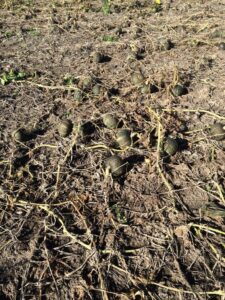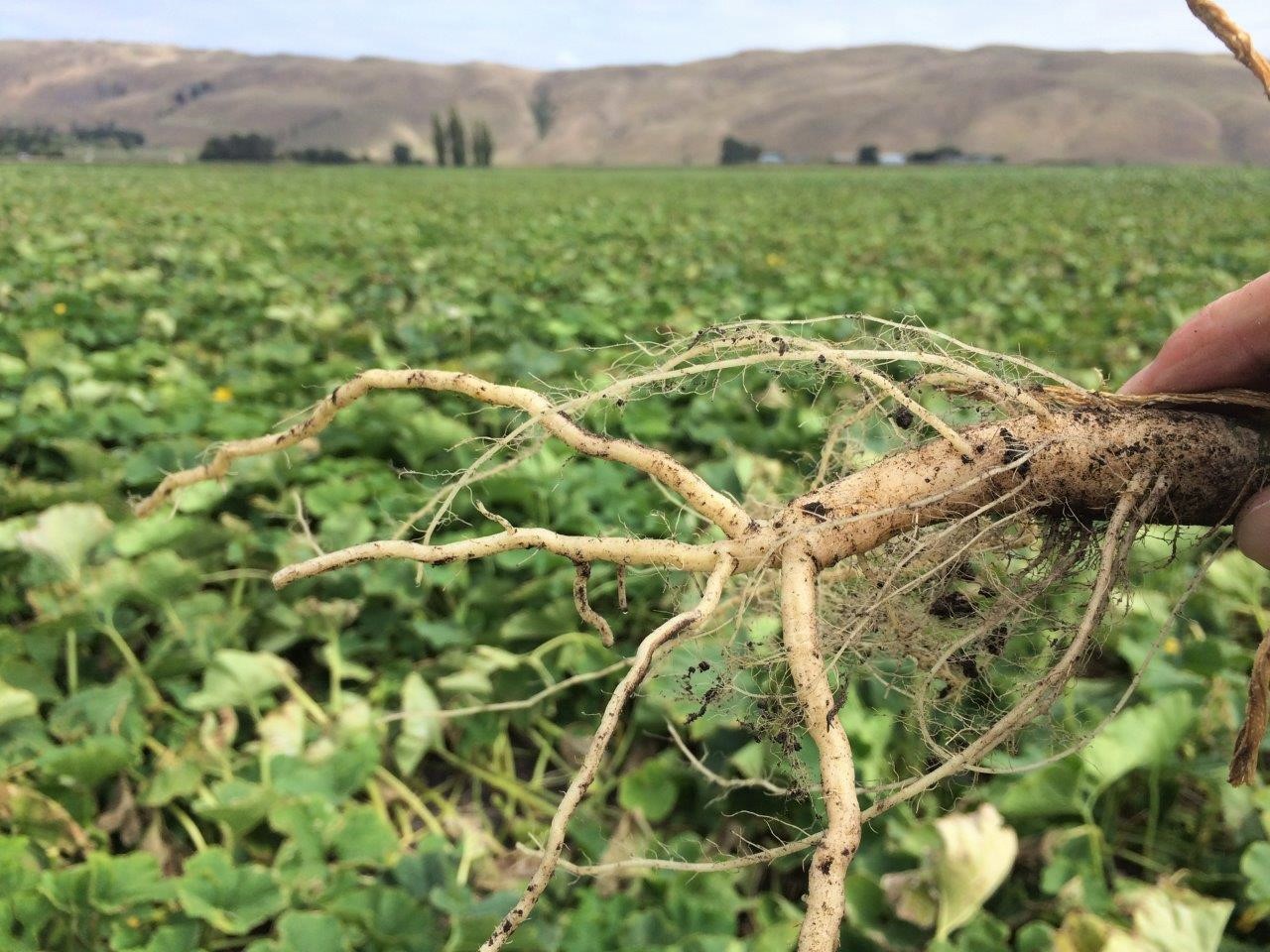Soilborne diseases costing New Zealand buttercup squash growers an average of $20 million a year in lost revenue are the focus of a new A Lighter Touch project with the NZ Buttercup Squash Council.

Unharvestable squash impacted by soilborne diseases. Credit Dereck Ferguson.
About 6,500 hectares of buttercup squash is grown each year in Aotearoa, producing around 85,000 tonnes of fruit, mostly for export. Soilborne diseases can cause losses ranging from 20 percent to as much as 70 percent of a field’s yield. Average annual losses sit at around 30 percent.
With losses increasing in severity each year, and control measures by individual growers showing little or varied success, the industry has come together to address the problem. As part of the A Lighter Touch programme, the NZ Buttercup Squash Council is looking to develop an agroecological “whole of farm” approach to manage soilborne diseases.
The project, which will run through to 2027, has five aspects to it, being:
- a review of all New Zealand and overseas knowledge on the prevalence, management and mitigation of soilborne diseases in squash, including plant breeding for disease tolerance;
- identification and evaluation of crop protection products that are available and useful in helping reduce soilborne disease effects;
- development of Best Management Practice guidelines enabling growers to apply an integrated and agroecological approach to improve soil health and reduce soilborne diseases in squash and other crops in the rotation;
- on-farm demonstrations (model system sites) showing practical application of tools and techniques to reduce the physical and economic effects of soilborne diseases;
- sharing knowledge from the project with growers to support their uptake of best management practices.
The diagram below illustrates how the different components of the project interact with each other.
 For squash growers, soilborne diseases cause losses to yield and quality in three ways, being:
For squash growers, soilborne diseases cause losses to yield and quality in three ways, being:
- the loss of yield potential (the reduction in the volume of crop able to be grown from a field with soilborne disease present),
- the diseases causing the leaf canopy to collapse prior to harvest which results in sunburn and discolouration of the squash, and
- soilborne diseases can cause decay in fruit while it is being shipped and while in transit to market.

Disease affected root. Credit Dereck Ferguson.

Disease affected squash. Credit Bradley Blackburn.
But it’s not just squash growers impacted by soilborne diseases. A Lighter Touch conducts an annual survey of its 15 plant product group members, and soilborne diseases have remained the number one crop disease management gap since that survey began four years ago. As such the findings from the next five years of the project will be of great interest to other ALT partners.
Two field trials were held over the 2021/22 growing season in Hawkes Bay and Gisborne, the main growing regions for squash. These trials were assessing six potential crop protection products for effectiveness against the main soilborne disease species Fusarium. However, due to low disease infection rates in the trial sites, the results were inconclusive. Further trials will be held in the coming growing season.

Healthy squash roots and crops are the aim of the project. Credit Dereck Ferguson
Find out more about this project in the Our Projects section of our website.
